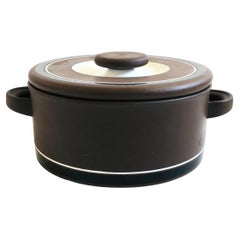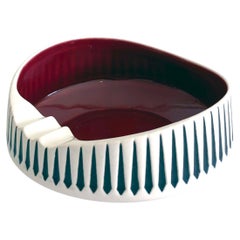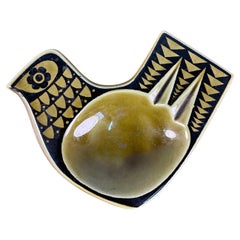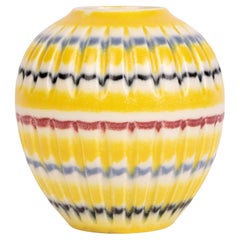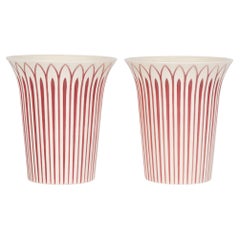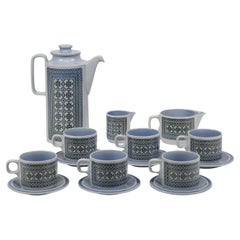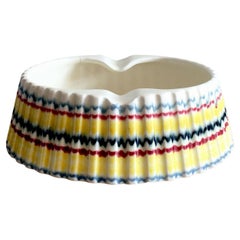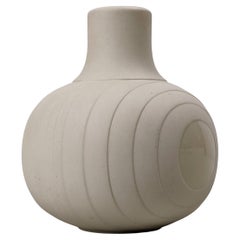Hornsea Vintage Pottery
Mid-20th Century English Mid-Century Modern Hornsea Vintage Pottery
Pottery
1950s English Mid-Century Modern Hornsea Vintage Pottery
Ceramic
1960s English Mid-Century Modern Hornsea Vintage Pottery
Ceramic
1960s English Mid-Century Modern Hornsea Vintage Pottery
Ceramic
1960s English Mid-Century Modern Hornsea Vintage Pottery
Ceramic
1970s British Mid-Century Modern Hornsea Vintage Pottery
Ceramic
Recent Sales
1960s English Mid-Century Modern Hornsea Vintage Pottery
Ceramic
1970s British Mid-Century Modern Hornsea Vintage Pottery
Ceramic
1970s British Mid-Century Modern Hornsea Vintage Pottery
Ceramic
People Also Browsed
1980s American Post-Modern Hornsea Vintage Pottery
Ceramic
Mid-20th Century German Mid-Century Modern Hornsea Vintage Pottery
Ceramic
Mid-20th Century Unknown Art Deco Hornsea Vintage Pottery
Silver
1960s Italian Mid-Century Modern Hornsea Vintage Pottery
Blown Glass
1920s German Art Deco Hornsea Vintage Pottery
Metal
Mid-20th Century German Mid-Century Modern Hornsea Vintage Pottery
Ceramic, Porcelain
1980s American Post-Modern Hornsea Vintage Pottery
Ceramic, Pottery
A Close Look at Mid-century-modern Furniture
Organically shaped, clean-lined and elegantly simple are three terms that well describe vintage mid-century modern furniture. The style, which emerged primarily in the years following World War II, is characterized by pieces that were conceived and made in an energetic, optimistic spirit by creators who believed that good design was an essential part of good living.
ORIGINS OF MID-CENTURY MODERN FURNITURE DESIGN
- Emerged during the mid-20th century
- Informed by European modernism, Bauhaus, International style, Scandinavian modernism and Frank Lloyd Wright’s architecture
- A heyday of innovation in postwar America
- Experimentation with new ideas, new materials and new forms flourished in Scandinavia, Italy, the former Czechoslovakia and elsewhere in Europe
CHARACTERISTICS OF MID-CENTURY MODERN FURNITURE DESIGN
- Simplicity, organic forms, clean lines
- A blend of neutral and bold Pop art colors
- Use of natural and man-made materials — alluring woods such as teak, rosewood and oak; steel, fiberglass and molded plywood
- Light-filled spaces with colorful upholstery
- Glass walls and an emphasis on the outdoors
- Promotion of functionality
MID-CENTURY MODERN FURNITURE DESIGNERS TO KNOW
- Charles and Ray Eames
- Eero Saarinen
- Milo Baughman
- Florence Knoll
- Harry Bertoia
- Isamu Noguchi
- George Nelson
- Danish modernists Hans Wegner and Arne Jacobsen, whose emphasis on natural materials and craftsmanship influenced American designers and vice versa
ICONIC MID-CENTURY MODERN FURNITURE DESIGNS
- Eames lounge chair
- Nelson daybed
- Florence Knoll sofa
- Egg chair
- Womb chair
- Noguchi coffee table
- Barcelona chair
VINTAGE MID-CENTURY MODERN FURNITURE ON 1STDIBS
The mid-century modern era saw leagues of postwar American architects and designers animated by new ideas and new technology. The lean, functionalist International-style architecture of Le Corbusier and Bauhaus eminences Ludwig Mies van der Rohe and Walter Gropius had been promoted in the United States during the 1930s by Philip Johnson and others. New building techniques, such as “post-and-beam” construction, allowed the International-style schemes to be realized on a small scale in open-plan houses with long walls of glass.
Materials developed for wartime use became available for domestic goods and were incorporated into mid-century modern furniture designs. Charles and Ray Eames and Eero Saarinen, who had experimented extensively with molded plywood, eagerly embraced fiberglass for pieces such as the La Chaise and the Womb chair, respectively.
Architect, writer and designer George Nelson created with his team shades for the Bubble lamp using a new translucent polymer skin and, as design director at Herman Miller, recruited the Eameses, Alexander Girard and others for projects at the legendary Michigan furniture manufacturer.
Harry Bertoia and Isamu Noguchi devised chairs and tables built of wire mesh and wire struts. Materials were repurposed too: The Danish-born designer Jens Risom created a line of chairs using surplus parachute straps for webbed seats and backrests.
The Risom lounge chair was among the first pieces of furniture commissioned and produced by celebrated manufacturer Knoll, a chief influencer in the rise of modern design in the United States, thanks to the work of Florence Knoll, the pioneering architect and designer who made the firm a leader in its field. The seating that Knoll created for office spaces — as well as pieces designed by Florence initially for commercial clients — soon became desirable for the home.
As the demand for casual, uncluttered furnishings grew, more mid-century furniture designers caught the spirit.
Classically oriented creators such as Edward Wormley, house designer for Dunbar Inc., offered such pieces as the sinuous Listen to Me chaise; the British expatriate T.H. Robsjohn-Gibbings switched gears, creating items such as the tiered, biomorphic Mesa table. There were Young Turks such as Paul McCobb, who designed holistic groups of sleek, blond wood furniture, and Milo Baughman, who espoused a West Coast aesthetic in minimalist teak dining tables and lushly upholstered chairs and sofas with angular steel frames.
Generations turn over, and mid-century modern remains arguably the most popular style going. As the collection of vintage mid-century modern chairs, dressers, coffee tables and other furniture for the living room, dining room, bedroom and elsewhere on 1stDibs demonstrates, this period saw one of the most delightful and dramatic flowerings of creativity in design history.
Finding the Right Dining-entertaining for You
Your dining room table is a place where stories are shared and personalities shine — why not treat yourself and your guests to the finest antique and vintage glass, silver, ceramics and serveware for your meals?
Just like the people who sit around your table, your serveware has its own stories and will help you create new memories with your friends and loved ones. From ceramic pottery to glass vases, set your table with serving pieces that add even more personality, color and texture to your dining experience.
Invite serveware from around the world to join your table settings. For special occasions, dress up your plates with a striking Imari charger from 19th-century Japan or incorporate Richard Ginori’s Italian porcelain plates into your dining experience. Celebrate the English ritual of afternoon tea with a Japanese tea set and an antique Victorian kettle. No matter how big or small your dining area is, there is room for the stories of many cultures and varied histories, and there are plenty of ways to add pizzazz to your meals.
Add different textures and colors to your table with dinner plates and pitchers of ceramic and silver or a porcelain lidded tureen, a serving dish with side handles that is often used for soups. Although porcelain and ceramic are both made in a kiln, porcelain is made with more refined clay and is more durable than ceramic because it is denser. The latter is ideal for statement pieces — your tall mid-century modern ceramic vase is a guaranteed conversation starter. And while your earthenware or stoneware is maybe better suited to everyday lunches as opposed to the fine bone china you’ve reserved for a holiday meal, handcrafted studio pottery coffee mugs can still be a rich expression of your personal style.
“My motto is ‘Have fun with it,’” says author and celebrated hostess Stephanie Booth Shafran. “It’s yin and yang, high and low, Crate & Barrel with Christofle silver. I like to mix it up — sometimes in the dining room, sometimes on the kitchen banquette, sometimes in the loggia. It transports your guests and makes them feel more comfortable and relaxed.”
Introduce elegance at supper with silver, such as a platter from celebrated Massachusetts silversmith manufacturer Reed and Barton or a regal copper-finish flatware set designed by International Silver Company, another New England company that was incorporated in Meriden, Connecticut, in 1898. By then, Meriden had already earned the nickname “Silver City” for its position as a major hub of silver manufacturing.
At the bar, try a vintage wine cooler to keep bottles cool before serving or an Art Deco decanter and whiskey set for after-dinner drinks — there are many possibilities and no wrong answers for tableware, barware and serveware. Explore an expansive collection of antique and vintage glass, ceramics, silver and serveware today on 1stDibs.
- Is Hornsea pottery valuable?1 Answer1stDibs ExpertAugust 8, 2024Yes, some Hornsea pottery is valuable. Particularly, pieces designed by John Clappison during the 1960s and 1970s, such as the Heirloom, Saffron and Brontë lines, often fetch high resale prices. How much you can expect to receive for a particular Hornsea item depends on its age, style, type, rarity and condition. A certified appraiser or knowledgeable antique dealer can provide you with an estimated value for your Hornsea pottery. On 1stDibs, shop a collection of Hornsea pottery from some of the world's top sellers.
- 1stDibs ExpertMay 3, 2024The most sought-after vintage pottery can change over time with collecting trends. However, demand for pieces from some makers tends to remain high. Among them are Bitossi, Eva Zeisel, Rose and Erni Cabat, Gertrud and Otto Natzler, Taisto Kaasinen, Lucie Rie, Stig Lindberg, Heath Ceramics, Wilhelm Kåge, Lisa Larson, Haeger, Spaulding, McCoy, Hall and Shawnee. On 1stDibs, find a wide range of vintage pottery.
- 1stDibs ExpertAugust 8, 2024Many kinds of pottery are worth money. The value of a particular piece depends on its maker, age, type, style and rarity, and trends in collecting that change over time. However, some makers’ pottery tends to remain in demand from year to year. Examples of makers coveted by collectors include Bitossi, Royal Crown Derby, Meissen, Wedgwood, Delft, Coalport, Rookwood, Spode, Roseville, Grueby, Moorcroft, Weller, Van Briggle, Paul Revere, Newcomb, Teco, George Ohr and Fulper. If you wish to know how much a particular piece may be worth, consult a certified appraiser or knowledgeable dealer. On 1stDibs, explore a wide range of pottery.
- 1stDibs ExpertOctober 24, 2024How you can tell if Bauer pottery is vintage is to look at the markings on the bottom. Bauer's backstamps have changed many times over the years, so the wording and whether or not the mark is raised or recessed can help you roughly determine when it was made. You can find image galleries featuring photos of Bauer's maker's marks on trusted online resources. Compare the pictures to your pottery to estimate its year of production. If your piece is 20 to 99 years old, it is vintage. Pottery made 100 or more years ago is antique. On 1stDibs, shop an assortment of Bauer pottery.
- 1stDibs ExpertNovember 26, 2024To identify vintage Italian pottery marks, you can research them yourself using trusted online resources or consult a certified appraiser or experienced antique dealer. One way to begin researching pottery marks on your piece is to take a photograph and then perform a reverse image search. If your search yields no results, type a description into a search engine or review image reference guides devoted to Italian pottery. Once you have identified the maker, learn more about the various markings it has used over the years and use this information to get a rough idea of the age of your piece. To be considered vintage, pottery must be between 20 and 99 years old. On 1stDibs, explore a wide range of vintage Italian pottery.
Read More
How Noguchi Elevated Ashtrays to Objets d’Art
Smoking might have fallen out of fashion, but these ashtrays have enduring design appeal.
Tapio Wirkkala Bucked the Trends of Mid-Century Nordic Design
The Finnish talent created nature-inspired pieces, from furniture to jewelry, with phenomenal staying power.
